20+ Sample Wellness Recovery Action Plan
-
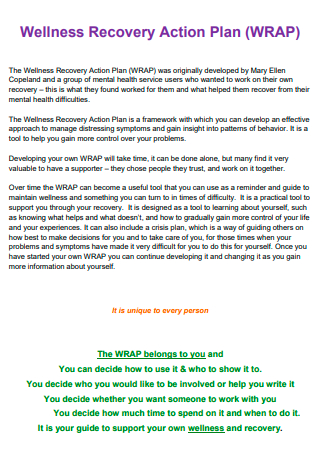
Wellness Recovery Action Plan Template
download now -
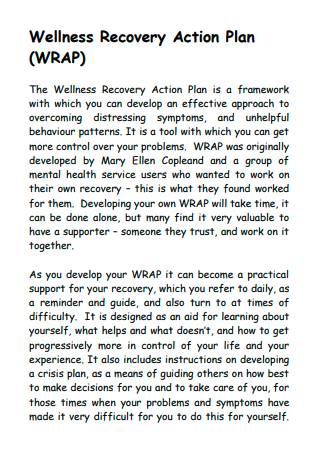
Wellness Recovery Action Plan Example
download now -

Workshop Wellness Recovery Action Plan
download now -
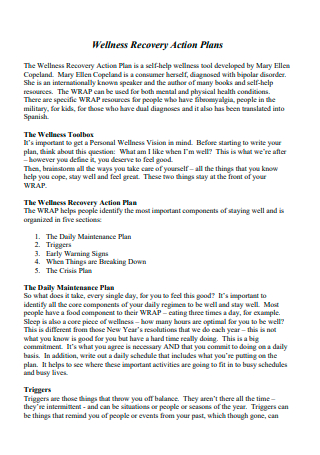
Standard Wellness Recovery Action Plan
download now -
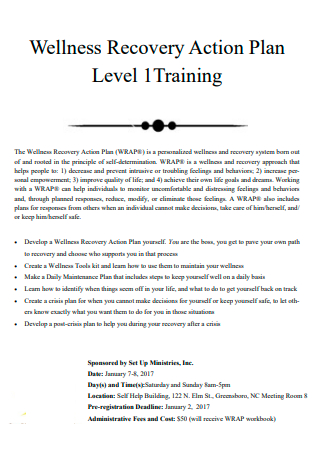
Level Training Wellness Recovery Action Plan
download now -
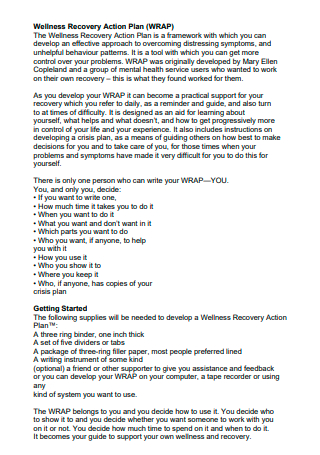
Wellness Recovery Action Plan in PDF
download now -
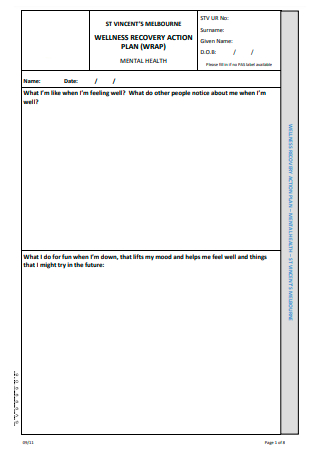
Formal Wellness Recovery Action Plan
download now -

Printable Wellness Recovery Action Plan
download now -
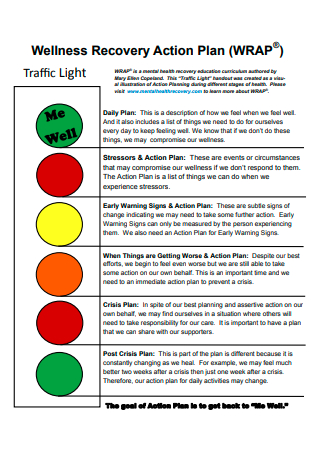
Traffic Light Wellness Recovery Action Plan
download now -
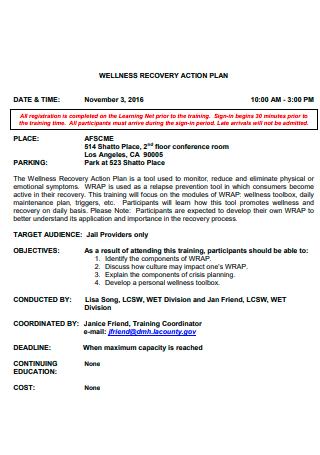
Basic Wellness Recovery Action Plan
download now -

Family Wellness Recovery Action Plan
download now -

Simple Wellness Recovery Action Plan
download now -

Wellness Recovery Action Plan For Depression Workshop
download now -
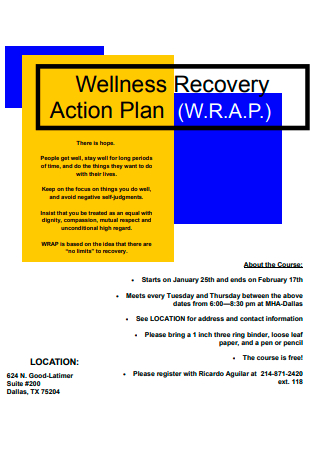
Sample Wellness Recovery Action Plan
download now -
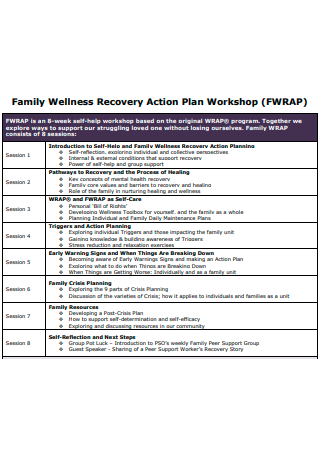
Family Wellness Recovery Action Plan Workshop
download now -
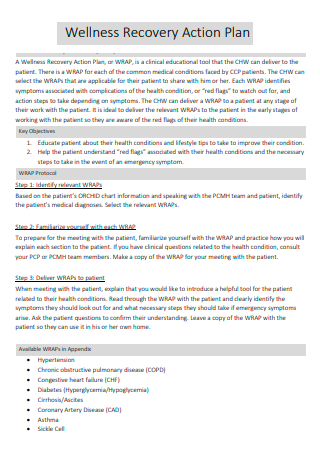
Draft Wellness Recovery Action Plan
download now -
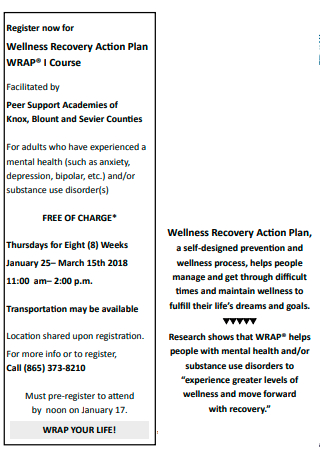
Course Wellness Recovery Action Plan
download now -
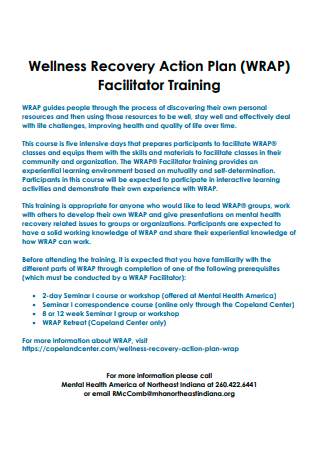
Facilitator Training Wellness Recovery Action Plan
download now -
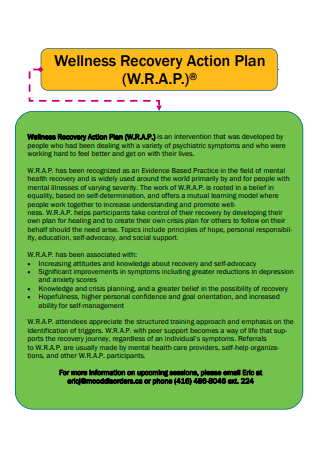
Wellness Recovery Action Plan Format
download now -
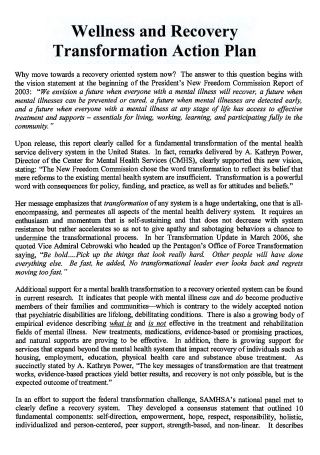
Wellness Recovery Transformation Action Plan
download now -
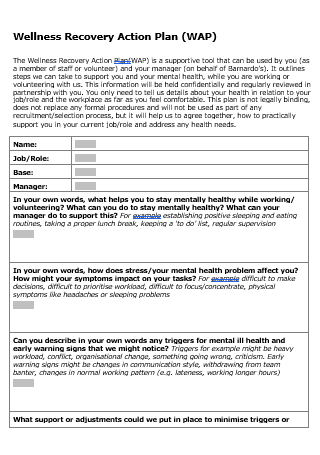
Wellness Recovery Action Plan in DOC
download now
FREE Wellness Recovery Action Plan s to Download
20+ Sample Wellness Recovery Action Plan
What Is a Wellness Recovery Action Plan?
Areas Where Wellness and Recovery Can Be Applied
Tips For Developing Your Own Wellness Recovery Action Plan
How to Create a Wellness Recovery Action Plan
FAQs
What is the purpose of a wellness recovery action plan?
How does the WRAP program work?
How do you create a WRAP plan?
What Is a Wellness Recovery Action Plan?
A wellness recovery action plan is a personalized action plan whose goal is to help individuals reach optimum wellness and help them cope with various life challenges and changes. It is an action plan or roadmap that is designed to equip individuals or even groups with the right tools to help them achieve positive health and total well-being.
According to an online article published by NHS Foundation Trust, the WRAP Program was developed by Mary Ellen Copeland, an American mental health recovery advocate. The model’s five key principles are hope, personal responsibility, education, self-advocacy and support.
Areas Where Wellness and Recovery Can Be Applied
The wellness recovery action plan can be applied in various areas of life, most notably the difficult and challenging aspects of life. To achieve holistic wellness and sustained recovery, there must be a conscious decision to admit struggles and problems in order to begin the recovery and healing process. The following listed below are just some major concepts or areas that wellness recovery action plans mainly address.
Tips For Developing Your Own Wellness Recovery Action Plan
The unique attribute of a wellness recovery action plan is it’s curated and personalized approach to health. In most scenarios, the individual is tasked to map his or her own action plan. This is typically easier said than done. You can consult professionals but when it comes to your own recovery and wellness, you need to figure out what works for you and what doesn’t. The following tips can help you take the initial steps in your wellness journey.
How to Create a Wellness Recovery Action Plan
To create a wellness recovery action plan, it is important to note that a great amount of introspection is recommended. And since the process is anything but one size fits all, it is important to spend a great deal of time examining and reflecting. The steps indicated below is a simple outline to help bring structure to your wellness recovery action plan.
-
Step 1: Create a Wellness Toolbox
The main thing to remember when crafting a wellness recovery action plan is having the right and necessary resources that can positively affect our wellness. This does not necessarily mean material resources or even financial resources. This could pertain to knowledge, skills, Valuable Information and various strategies to help you cope better and promote greater wellness. It is important to prepare a toolbox of these resources. Identify these resources and list them down accordingly.
-
Step 2: Develop a Daily Maintenance Plan
As in any action plan, there needs to be a form of structure that can be followed in order to reach and sustain certain goals. In a wellness recovery plan, having a daily Maintenance Plan plays an important role in keeping structure and function. What are the daily habits you can develop to maintain wellness or keep you on the road to recovery? It is essentially a daily To-Do List based on the wellness toolbox you created for yourself in the first step.
-
Step 3: Identify Triggers and Warning Signs
A key step in any wellness recovery action plan is identifying the stressors and early warning signs that may lead you to relapse or that can threaten any progress made on your wellness journey. This is a crucial step because it requires both self-awareness and self-regulation. First, a thorough examination of one’s strengths as well as weaknesses can help you identify what Warning Signs and external triggers can potentially undo your wellness and recovery. Self-regulation is also needed in order for any wellness action plan to work. This entails practicing accountability and taking ownership for one’s own actions.
-
Step 4: Prepare for Crisis And Post-Crisis Planning
Realistically, no action plan is 100% fool-proof or immune to failures and unexpected events. A comprehensive wellness and recovery action plan contains a well-thought out strategy for dealing exactly with these crisis moments and unexpected plot twists. Preparing a Crisis Plan will help you effectively deal with anything that might threaten your recovery and progress. If the right strategies and support are in place, then it could be relatively easier to bounce back or regain control of the situation. In addition, a post-crisis plan may also be incorporated for once the crisis has passed, you can immediately work on rebuilding and restoring yourself.
FAQs
What is the purpose of a wellness recovery action plan?
The purpose of a wellness recovery action plan is to offer the necessary tools and resources for an individual to thrive and improve their life through personalized and deliberate techniques designed to support them amid challenges and adversities.
How does the WRAP program work?
The WRAP program is designed by the individual himself. The participant gets to chart his or her own progress but is also tasked to identify potential triggers and confront uncomfortable feelings and thoughts in the process. He or she gets to decide who can support them in their recovery and journey to wellness.
How do you create a WRAP plan?
To create a WRAP plan, you need to first develop a daily maintenance plan. Secondly, it is important to identify the triggers and stressors that upset you or lead you to experience uncomfortable feelings. Third, you can opt to create a crisis plan and post-crisis plan. And lastly, decide who you want as support for you and your recovery, these can be trusted friends, loved ones etc.
You can take charge of your own fulfillment and happiness. With a personalized wellness recovery action plan designed by you, you can take the first step. Browse the wide selection of printable plan worksheet and workbook templates above to get started on yours now!
